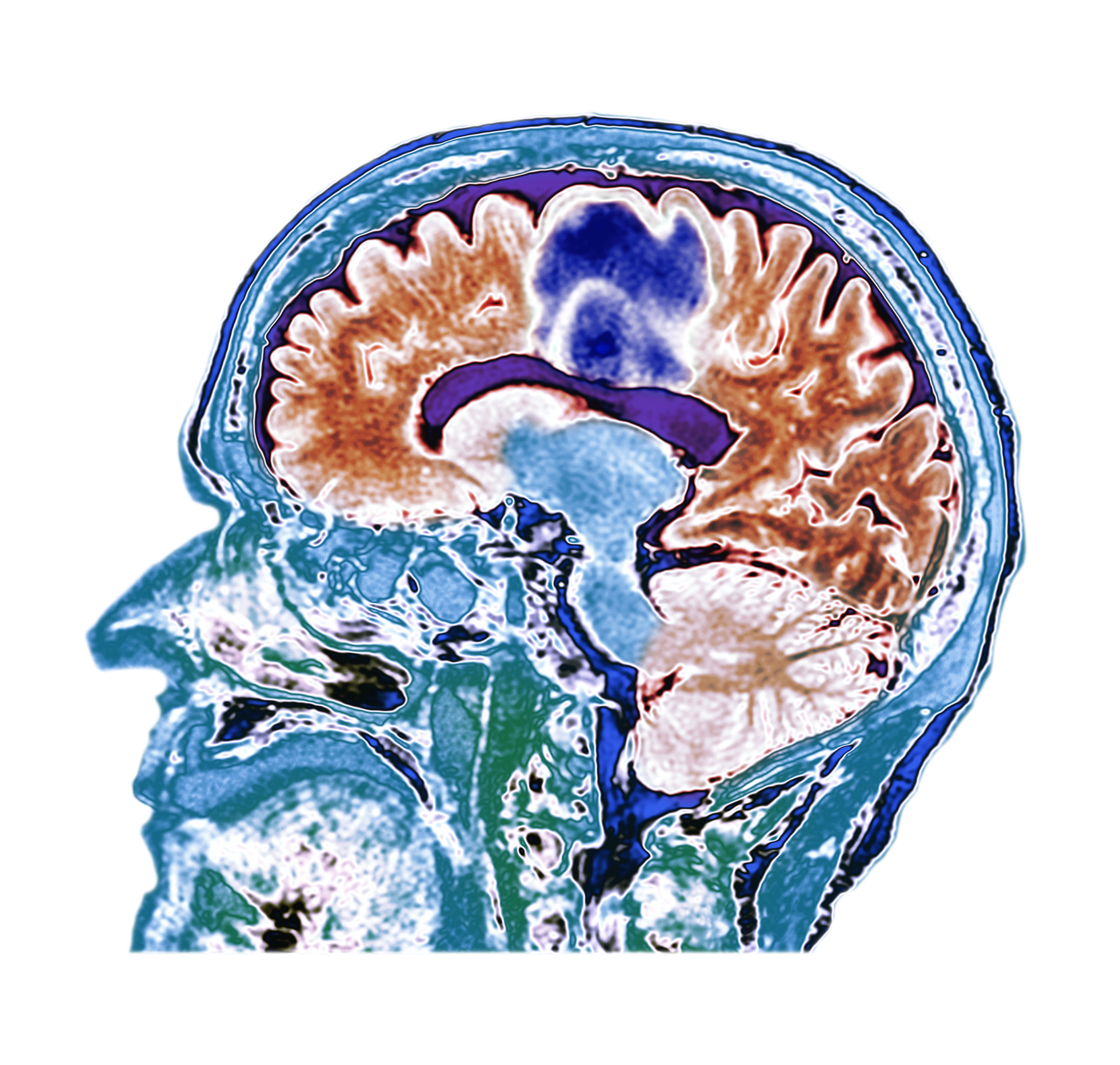
At a Glance:
- A deadly brain cancer, glioblastoma is difficult to treat because of the blood-brain barrier.
- UVA is one of five hospitals in the U.S. participating in a stage 1 clinical trial testing the safety of using focused ultrasound to treat glioblastoma.
- Focused ultrasound temporarily opens the blood-brain barrier to allow the delivery of more cancer-fighting agent to the tumor.
Unfortunately, the most common primary form of brain cancer, glioblastoma, is also one of the most deadly and difficult to treat. The statistics are stark: the median survival rate for those receiving the standard of care — resection, radiation and chemotherapy — is between 12 and 18 months.
Surgery and radiation therapy have limited effectiveness because glioblastoma is particularly aggressive, infiltrating brain tissue surrounding the primary tumor. The use of chemotherapy to destroy these “tendrils” is equally daunting. The blood-brain barrier — comprised in part of tight junctions between the endothelial cells in the microvasculature — limits substances from crossing to the brain’s extracellular fluid from the blood. It often severely constrains the flow of tumoricidal therapies to the tumor.
Focused ultrasound, a relatively new technique, may offer a solution to this problem. UVA is one of five hospitals in the United States participating in a stage 1 clinical trial testing the safety of using focused ultrasound to temporarily open the blood-brain barrier. “If we can deliver more of a cancer-fighting agent to the tumor, we are likely to have a better therapeutic effect,” says Jason Sheehan, MD, PhD, professor of neurosurgery at UVA and editor-in-chief of the Journal of Neuro-Oncology. “We think focused ultrasound can do just that.”
Opening the Blood-Brain Barrier to Therapeutic Drugs
With focused ultrasound, acoustic lens are used to concentrate multiple intersecting beams of ultrasound energy on a focal point within the body and do so with extreme precision and accuracy. At low ultrasound intensities, researchers have discovered that the pulsing inherent in sound waves can cause the tight junctions to relax temporarily. This process is called sonication. By delivering focused ultrasound in conjunction with magnetic resonance imaging, physicians can open the specific part of the blood-brain barrier that is within or adjacent to the tumor.
Patients with glioblastoma typically undergo radiation and multiple cycles or sessions of chemotherapy after resection. During the trial, focused ultrasound will be administered immediately before each session and its effectiveness in controlling the tumor monitored. “Our goal is to accrue approximately five patients at UVA for this initial trial,” Sheehan says. The requirements of the study are rigorous. More information can be found online at clinicaltrials.gov.
At the Frontier of Innovation in Focused Ultrasound
Over the last decade, UVA has emerged as a leading institution for investigating therapeutic applications for focused ultrasound, exploring its value to address a host of conditions, ranging from uterine fibroids and essential tremor to epilepsy and breast and prostate cancer. With the support of the Focused Ultrasound Foundation, founded by former UVA neurosurgeon Neal Kassel, MD, UVA opened a dedicated Focused Ultrasound Center in 2009 and has remained at the forefront of the field ever since.
Research on focused ultrasound, however, is not confined to the center. Sheehan is one of a score of faculty members at UVA with active preclinical research programs that tap the power of focused ultrasound. “Focused ultrasound is a tremendously versatile technology,” he says. “We’re still in the early stages of discovering its therapeutic potential.”
In addition to his work on blood-brain barrier disruption, Sheehan is exploring two other applications of the technology. One example, being tested in animal models, is the delivery of a fluorescent dye that is sequestered preferentially in tumor cells. Tumor cells are then targeted with sonication, triggering reactive oxygen species that damage and eventually destroy them. Sheehan is also using focused ultrasound to slightly raise the temperature of tumor cells, making them much more susceptible to the effects of ionizing radiation.
“This is just the tip of the iceberg for using focused ultrasound to treat brain cancer,” Sheehan says. “In the end, it will probably take a combination of all available treatments to really move the needle on glioblastoma, but we are very excited about the promise of focused ultrasound to improve outcomes for neuro-oncology patients.”
UVA Health is now open for in-person care for new and existing patients.
Call UVA Physician Direct at 800.552.3723 to refer a patient.
To transfer a patient to UVA Health, call the UVA Transfer Center at 844.XFERUVA (933.7882).
Contact Us
Our Physician Relations Manager, Liz Nottingham, is available by phone (434.981.1023) or email to answer your questions and help with problem solving. Feel free to reach out to her as needed.